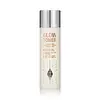What's inside
What's inside
 Key Ingredients
Key Ingredients

 Benefits
Benefits

 Concerns
Concerns

No concerns
 Ingredients Side-by-side
Ingredients Side-by-side

Water
Skin Conditioning1,2-Hexanediol
Skin ConditioningPanthenol
Skin ConditioningLimnanthes Alba Seed Oil
Skin ConditioningEthylhexylglycerin
Skin ConditioningSodium Hyaluronate
HumectantDipropylene Glycol
HumectantSphingolipids
EmollientButylene Glycol
HumectantCeramide NP
Skin ConditioningPolyglutamic Acid
Skin ConditioningSaccharide Isomerate
HumectantGluconolactone
Skin ConditioningBeta-Glucan
Skin ConditioningPullulan
Xanthan Gum
EmulsifyingGlycerin
HumectantCarbomer
Emulsion StabilisingTocopherol
AntioxidantCitric Acid
BufferingTromethamine
BufferingSodium Citrate
BufferingSymphytum Officinale Root Extract
Skin ConditioningSodium Phytate
Methyl Glucose Sesquistearate
EmollientHydrogenated Lecithin
EmulsifyingCetearyl Glucoside
EmulsifyingPolyglyceryl-3 Methylglucose Distearate
EmulsifyingCentella Asiatica Extract
CleansingWater, 1,2-Hexanediol, Panthenol, Limnanthes Alba Seed Oil, Ethylhexylglycerin, Sodium Hyaluronate, Dipropylene Glycol, Sphingolipids, Butylene Glycol, Ceramide NP, Polyglutamic Acid, Saccharide Isomerate, Gluconolactone, Beta-Glucan, Pullulan, Xanthan Gum, Glycerin, Carbomer, Tocopherol, Citric Acid, Tromethamine, Sodium Citrate, Symphytum Officinale Root Extract, Sodium Phytate, Methyl Glucose Sesquistearate, Hydrogenated Lecithin, Cetearyl Glucoside, Polyglyceryl-3 Methylglucose Distearate, Centella Asiatica Extract
Water
Skin ConditioningPropanediol
SolventNiacinamide
SmoothingSilica
AbrasiveIsopentyldiol
HumectantPhenoxyethanol
PreservativeGlycerin
HumectantBenzyl Alcohol
PerfumingDicaprylyl Ether
EmollientButyrospermum Parkii Butter
Skin ConditioningCarbomer
Emulsion StabilisingParfum
MaskingSodium Hyaluronate
HumectantTrisodium Ethylenediamine Disuccinate
Hydrolyzed Opuntia Ficus-Indica Flower Extract
AbrasiveSodium Hydroxide
BufferingAcrylates/C10-30 Alkyl Acrylate Crosspolymer
Emulsion StabilisingHydrogenated Lecithin
EmulsifyingCitrus Aurantium Bergamia Peel Oil
Trifolium Pratense Flower Extract
AstringentCitrus Limon Peel Oil
MaskingPhenethyl Alcohol
MaskingEthylhexylglycerin
Skin ConditioningMaltodextrin
AbsorbentPentapeptide-48
Skin ConditioningTocopherol
AntioxidantLimonene
PerfumingCitronellol
PerfumingGeraniol
PerfumingLinalool
PerfumingCitral
PerfumingEugenol
PerfumingWater, Propanediol, Niacinamide, Silica, Isopentyldiol, Phenoxyethanol, Glycerin, Benzyl Alcohol, Dicaprylyl Ether, Butyrospermum Parkii Butter, Carbomer, Parfum, Sodium Hyaluronate, Trisodium Ethylenediamine Disuccinate, Hydrolyzed Opuntia Ficus-Indica Flower Extract, Sodium Hydroxide, Acrylates/C10-30 Alkyl Acrylate Crosspolymer, Hydrogenated Lecithin, Citrus Aurantium Bergamia Peel Oil, Trifolium Pratense Flower Extract, Citrus Limon Peel Oil, Phenethyl Alcohol, Ethylhexylglycerin, Maltodextrin, Pentapeptide-48, Tocopherol, Limonene, Citronellol, Geraniol, Linalool, Citral, Eugenol
 Reviews
Reviews

Ingredients Explained
These ingredients are found in both products.
Ingredients higher up in an ingredient list are typically present in a larger amount.
Carbomer is a polymer of acrylic acid. Its main role is to create a gel consistency.
A high amount of carbomer can cause pilling or balling up of products. Don't worry, most products contain 1% or less of carbomer.
Ethylhexylglycerin (we can't pronounce this either) is commonly used as a preservative and skin softener. It is derived from glyceryl.
You might see Ethylhexylglycerin often paired with other preservatives such as phenoxyethanol. Ethylhexylglycerin has been found to increase the effectiveness of these other preservatives.
Glycerin is already naturally found in your skin. It helps moisturize and protect your skin.
A study from 2016 found glycerin to be more effective as a humectant than AHAs and hyaluronic acid.
As a humectant, it helps the skin stay hydrated by pulling moisture to your skin. The low molecular weight of glycerin allows it to pull moisture into the deeper layers of your skin.
Hydrated skin improves your skin barrier; Your skin barrier helps protect against irritants and bacteria.
Glycerin has also been found to have antimicrobial and antiviral properties. Due to these properties, glycerin is often used in wound and burn treatments.
In cosmetics, glycerin is usually derived from plants such as soybean or palm. However, it can also be sourced from animals, such as tallow or animal fat.
This ingredient is organic, colorless, odorless, and non-toxic.
Glycerin is the name for this ingredient in American English. British English uses Glycerol/Glycerine.
Learn more about GlycerinHydrogenated Lecithin is created from the hydrogenation of lecithin (a group of phospholipids). Hydrogenation is a chemical reaction between hydrogen and another element.
This ingredient is an emollient and emulsifier. As an emollient, it helps soften skin by trapping moisture within. As an emulsifier, it prevents oil and water ingredients from separating.
Sodium Hyaluronate is hyaluronic acid's salt form. It is commonly derived from the sodium salt of hyaluronic acid.
Like hyaluronic acid, it is great at holding water and acts as a humectant. This makes it a great skin hydrating ingredient.
Sodium Hyaluronate is naturally occurring in our bodies and is mostly found in eye fluid and joints.
These are some other common types of Hyaluronic Acid:
Learn more about Sodium HyaluronateTocopherol (also known as Vitamin E) is a common antioxidant used to help protect the skin from free-radicals and strengthen the skin barrier. It's also fat soluble - this means our skin is great at absorbing it.
Vitamin E also helps keep your natural skin lipids healthy. Your lipid skin barrier naturally consists of lipids, ceramides, and fatty acids. Vitamin E offers extra protection for your skin’s lipid barrier, keeping your skin healthy and nourished.
Another benefit is a bit of UV protection. Vitamin E helps reduce the damage caused by UVB rays. (It should not replace your sunscreen). Combining it with Vitamin C can decrease sunburned cells and hyperpigmentation after UV exposure.
You might have noticed Vitamin E + C often paired together. This is because it is great at stabilizing Vitamin C. Using the two together helps increase the effectiveness of both ingredients.
There are often claims that Vitamin E can reduce/prevent scarring, but these claims haven't been confirmed by scientific research.
Learn more about TocopherolWater. It's the most common cosmetic ingredient of all. You'll usually see it at the top of ingredient lists, meaning that it makes up the largest part of the product.
So why is it so popular? Water most often acts as a solvent - this means that it helps dissolve other ingredients into the formulation.
You'll also recognize water as that liquid we all need to stay alive. If you see this, drink a glass of water. Stay hydrated!
Learn more about Water